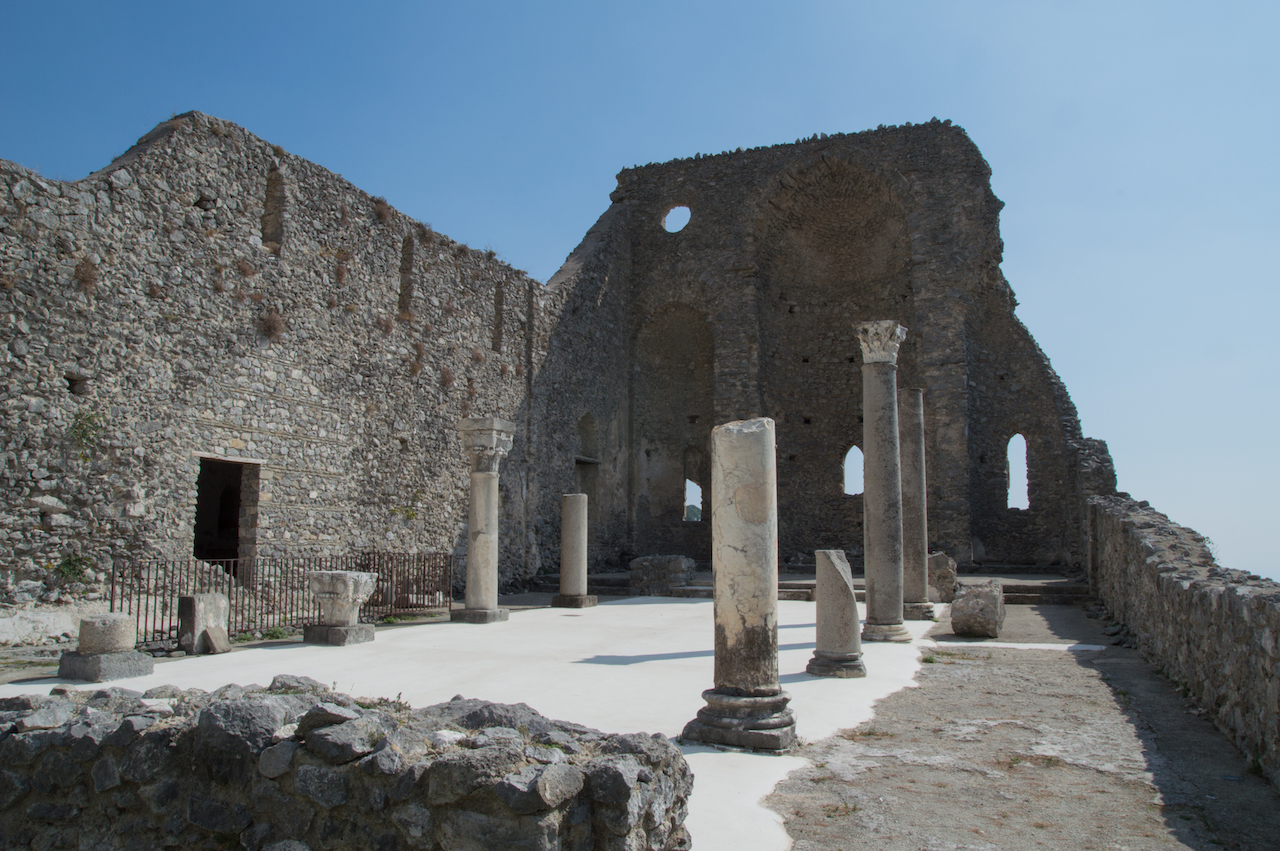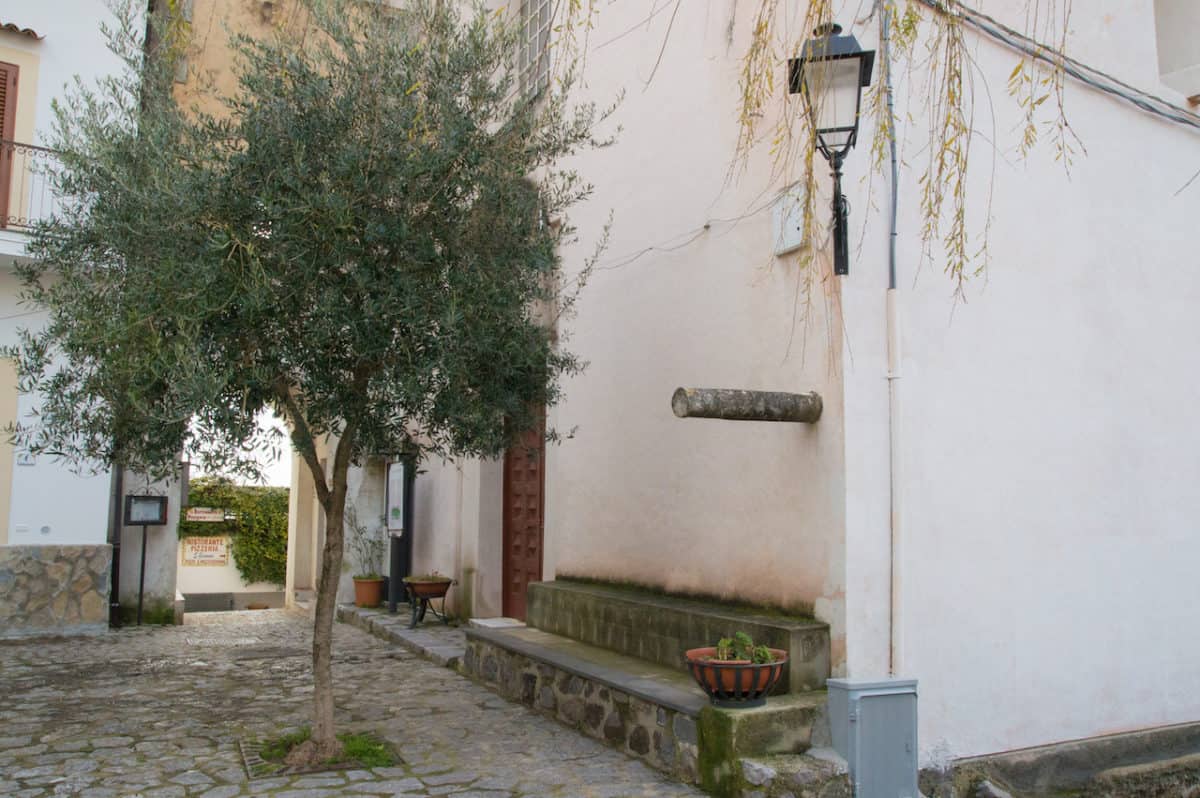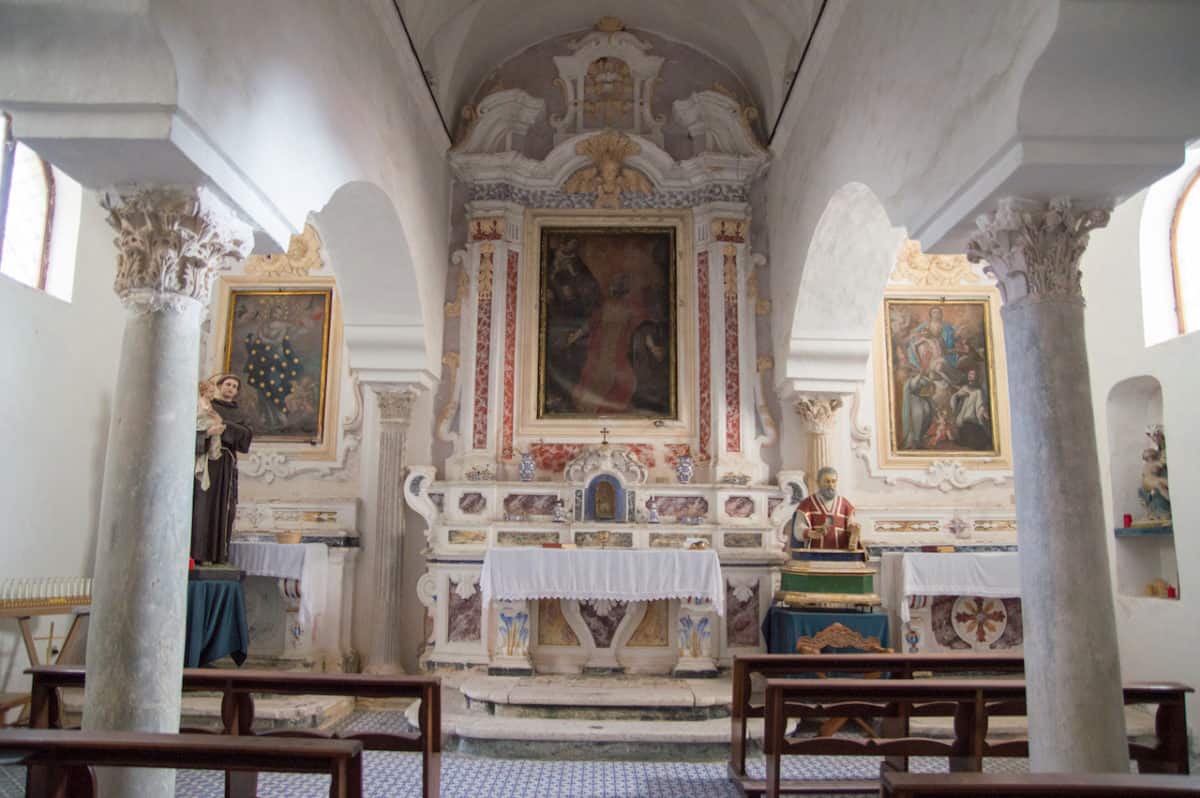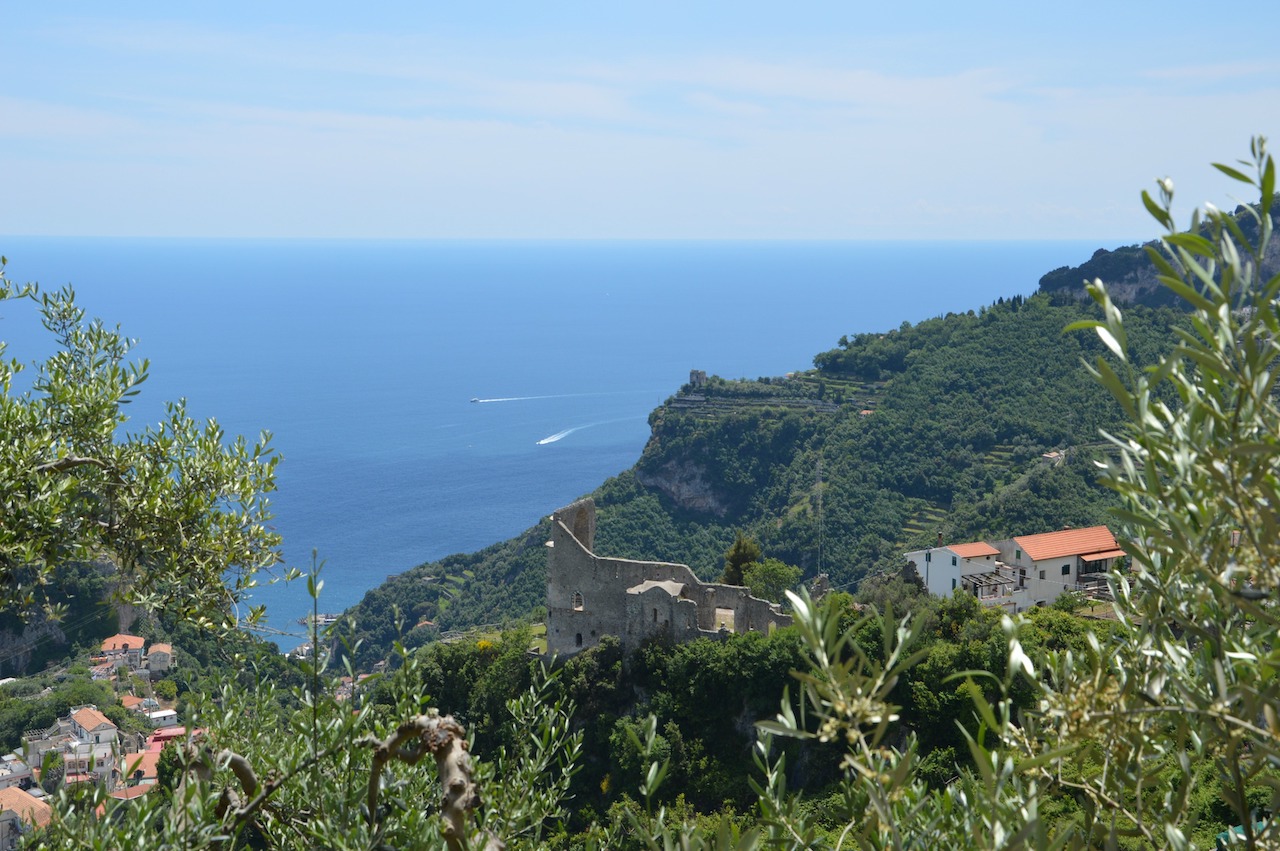It is the oldest site on the Amalfi coast and probably its birthplace. among stone streets and terraced gardens, there’s a surprising amount of history to discover
February 23rd, 2021, text and photos by Laura Thayer
Nestled in the mountains between Amalfi and Scala, the peaceful hamlet of Pontone is perhaps not where you would expect to find the birthplace of the Amalfi Coast. Yet, here among stone streets and terraced gardens, there’s a surprising amount of history to discover.
“Pontone is the oldest site on the Amalfi coast. Today there are only a little more than 400 residents here, but at one time Pontone was one of the oldest settlements, especially from a cultural point of view, that gave birth to what would become the first maritime republic of Italy, that is the Republic of Amalfi,” says Bonaventura Esposito, longtime Pontone resident, and expert on the history of the Amalfi Coast. “We can truly say that Pontone represents the emotional expression of culture,” Esposito continues “and here in the quiet streets of Pontone it’s possible to feel the history of the Republic of Amalfi come to life.”
The Oldest Settlement on the Amalfi Coast
Scala is noted as the oldest settlement on the Amalfi Coast, but to find the very beginning means visiting Pontone. Here was the spot where Romans patricians arriving on the coastline in the first half of the 4th century from over the Lattari Mountains found a naturally strategic location for a new town.
Pontone sits on a narrow ridge between two river valleys, the Dragone to the east and the Canneto to the west, which provided abundant freshwater. The mountains also offered natural protection that was later strengthened with the Castrum Scalelle and watchtower.
Hiking to the ruins of the protective walls and the Torre dello Ziro watchtower, it’s possible to gaze out over the Gulf of Salerno and from Ravello to Atrani and Amalfi. Yet, from here Pontone lies hidden behind the mountains that rise up between Atrani and Amalfi creating the perfect strategic setting.

The splendor of the Basilica di Sant’Eustachio
At the height of its success in the Middle Ages, Pontone was an independent municipality called Scalella that was home to wealthy families that built grand homes and richly decorated churches. “Pontone was considered the right arm of the Maritime Republic of Amalfi, that is, its beating heart within the coastline,” Esposito explains.
Today the ruins of the Basilica di Sant’ Eustachio are one of the main sites in Pontone. This 12th-century church was built for the d’Afflitto family near their noble palazzo. Walking among the crumbled walls and gazing up at the little that remains of the lavish decorations, it’s hard to imagine that this at its prime it was considered one of the most splendid churches on the Amalfi Coast. Some stories are lost to time, but Pontone still holds many more the shed light on the rich past of the Republic of Amalfi.
At the Crossroads of the Republic of Amalfi
Right in the center of Pontone is Piazza San Giovanni Battista, today a tranquil spot to sit under the trees or look out over the verdant mountainsides down the valley to Amalfi. It takes some imagination to step back in time to see the piazza bustling with activity, but this very spot sat at the crossroads of the stone pathways connecting Amalfi, Scala (and Ravello beyond), and Atrani.
Pontone was an important center of textile production and Piazza San Giovanni Battista was the heart of the activity. Here the wool cloth was made that Amalfi’s merchants sold throughout southern Italy and Sicily. Sitting at the edge of Piazza San Giovanni Battista is the church that gives the square its name.
Dedicated to St. John the Baptist, this church was constructed in the 12th century with the will and with the support of the local wool makers. The choice of San Giovanni Battista was certainly not by chance. Strongly connected to water, an essential element for making cloth from wool, San Giovanni Battista was considered a protector of wool workers in the Middle Ages. Here is a town fueled by this tradition, it was a natural choice.

The church’s bell tower
Standing at the piazza’s edge, the church’s bell tower was built on three levels at three different points from the 12th to the 18th century. Two details set this bell tower apart. First is how the pathway passes directly below an arched passageway through the bell tower.
Second is the majolica tiled clock from the 1700s, the only kind along the Amalfi Coast. Another odd detail might catch your eye. To the right of the entrance, an ancient column projects horizontally from the side of the church. Called the Column of Truth, it was a place of safety for anyone who might have done wrong or was being persecuted.
Safe from the local authorities, the parish priest became responsible for the fate of the person seeking sanctuary and their rehabilitation into society.

The sacred decoration
Stepping inside the single-nave church, the stucco decorations we see today are from later redecorations in the 16thcentury and include ornate fan-shaped elements that can be found in all of the churches in Pontone. The dark wood and gilded altarpiece stand out starkly against the ornamental Baroque decorations.
Look closely for scenes from the martyrdom of San Giovanni Battista with a 17th-century wooden statue of the saint in the center flanked by paintings of San Pietro and Sant’ Andrea. To the left of the altar is a fine 16th-century painting of the Circumcision by Aniello Iannicelli Napoletano.
To the right of the altar in a side, chapel is the tomb of Filippo Spina, a noble knight, from 1346. Before leaving, stop to admire the pipe organ located above the entrance. Added in 1757, the organ is remarkable both for its Venetian Rococo decorations and the fact that it is still functioning and fills the church with its rich sound – just as it has for centuries for the town’s faithful.
Layers of History
A steep staircase from Piazza San Giovanni Battista leads up to one of Amalfi Coast’s gems. “Pontone is truly a museum village and an open-air treasure chest,” explains Esposito. The Church of San Filippo Neri (St. Philip Neri), founding in the 10th century, is the centerpiece of Pontone’s religious and cultural heritage.
Before arriving, gaze up at the stone bell tower, which dates to the 10th century and, rather unusually, is not directly connected to the church itself. It’s located across a vaulted atrium from the entrance to the church. The stone pathway leads right through the atrium, another distinctive feature that makes this church stand out from all others on the Amalfi Coast.
Even without stepping inside the church, the incredible cross vaulting of the atrium takes one back in time and is reminiscent of the cross vaulting in the Arsenal in Amalfi where ships were built in the Middle Ages.

The heritage of De Bonito family
The past seems remarkably present in Pontone, and especially in the details of the San Filippo Neri Church. Here even to enter the church you tread upon ancient marble columns that have been split lengthwise and laid down to create steps. Once inside, the small space reveals a richness with all of the elements of a much larger church yet at a more intimate scale.
This church was originally built for the wealthy De Bonito family, some of the earliest settlers of Pontone from ancient Rome, and was dedicated to San Matteo (St. Matthew). Stucco decorations were added later in the 17th and 18thcenturies when the church was dedicated to San Filippo Neri.
What is visible today pales in comparison to its original splendor, but there are still many fine elements. The granite columns, striking blue, and white geometric patterned majolica tiled floor, and moving 17th-century wooden statues of San Filippo Neri and the recently restored statue of Virgin Mary of the Immaculate Conception carved from one solid piece of olive wood.
The unique example of religious art on the Amalfi Coast
Step into the former sacristy and turn around to find just above the entrance a 14th-century fresco depicting the crucifixion with Christ’s body created in stucco in relief from the background. A truly spectacular and unique example of religious art on the Amalfi Coast that deserves to be seen by far more visitors. Incredibly, in the silence of this space, sit the original 10th-century bronze bells.
Removed the bell tower due to their weight and the risk they posed structurally for the historic bell tower, now they sit quietly. While Pontone is a tranquil village today, the silence reverberates with history – of the Amalfi Coast, of the place where the foundations of the later Republic of Amalfi were built, of centuries of heartfelt worship, of traditions, lost and traditions still remembered by Pontone’s residents and experienced by travelers today.

